-
Posts
38 -
Joined
-
Last visited
Content Type
Profiles
Forums
Events
Posts posted by pavidovich
-
-
En 17/3/2023 a las 12:46, maciekish dijo:
Hi, is this for some specific hardware or is it full dcs-bios on esp32 just like an Arduino and you can define pins and switches like normal, and perhaps drive a display faster than an Arduino?
Hi, this ESP32 implementation is just only for my radio panel project, it doesn't integrate all the original DCSBios functions and callbacks. It helps me to understand the DCSBios inner logic.
In my repository you can find a DCSBios fork that includes both, the ESP32 and ESP8266 microcontrollers, available as options like the Arduino or STM32.
https://github.com/pavidovich/dcs-bios-arduino-library
Furthermore, if you don't require the WiFi accessibility, you can use the ESPs as a traditional Arduino board with the original DCSBios library. In this situation two considerations, the IRQ option isn't available and the Arduino Servo library isn't compatible with the ESPs.
The ESPs are faster than the traditional Arduinos, they have larger memory, I/O pins, SPI/I2C buses, etc.
Hope can be useful.
-
 1
1
-
-
Yes, you can work with the Pi Pico using the standard USB interface to get the data from DCS-Bios. The IRQ_Serial acceleration does not work with the Pi Pico as it is hardware dependant, but doesn't matter, the Pi Pico is quite fast.
Just compile your program using the Arduino IDE and download it to the Pi Pico.
You can also work with any other microcontroller, as it is the ESP32. However, with this microcontroller there is a problem related to the Servo library. The solution is easy, just modify change the Servos.h library, which is present in the DCS-Bios/internal, to use any other ESP32 servo library.
In this link you can find how to work with ESP8266 or ESP32 boards and DCS-Bios
-
 1
1
-
 1
1
-
-
Many thanks for the clarification.
-
Congrats with your project, it is really impressive.
How did you set the text on the buttons?
-
Here, there is a video example for this technique
-
 2
2
-
-
It is possible to use the Esp32 in serial mode like arduino boards do.
Enviado desde mi SM-A217F mediante Tapatalk -
Hello everybody,
I share with you my solution to the DCS-Bios multi-module management for any button box.
The code is based on an ESP32 that allows fully wireless communication with DCS, that means it is not required any USB port
https://github.com/pavidovich/ESP32_MultiModuleDCSBios
The code can be easiliy adapted to your button box, just replace the function getButton() (present in the ESP32_Code.ino) with any other that gets the button ID from your button box.
There are 3 examples based on the A-4E-C, F-5E-3 and T45 modules. Just take into account that these examples are based on my button-box, so you should adapt them to your necessities.
-
 3
3
-
-
RpiPico can be programmed using the same Arduino IDE environment, the C/C++ code can be directly compiled.
There are many web pages that explain how to configure the IDE, here you are one
https://www.techtonions.com/programming-pi-pico-using-arduino-ide/
Generic libraries should be able to be used with the RpiPico, as on others platforms (ESP32, STM, ...)-
 1
1
-
-
hace 15 horas, No1sonuk dijo:
Are they THAT much better than an Arduino Pro Micro?
Arduino Pro Micro is able to do the job! it allow us to create any button box. But, the RPi Pico it can also do this but furthermore it can simultaneously do much more other stuff, as manage displays, servos, and why not some VGA screens. This is because it is dual core, higher clock speed, bigger amount of memory, the ability to program its I/O pins, etc.
-
 1
1
-
-
Hi all,
maybe this video shows how to create a HID device.
It seems quite easy to create a joystick and because the huge power of the Pi Pico it will be possible to add much more functionalities.
-
Thanks a lot for your comments, I really appreciate them!
-
Hi all, I share with you my afterburner detent approach for the TWCS that is based on a mechanical parts instead of magnets.
There is a lever that must be lift up to allow the throttle continues its movement.
Here you are the link to thingverse: https://www.thingiverse.com/thing:4925168
The video shows how it acts.
-
 3
3
-
 1
1
-
-
There is an Android app that could be what you are looking forAnother option... Can use and Android tablet?
https://www.digitalcombatsimulator.com/en/files/3308547/
Enviado desde mi SM-A105FN mediante Tapatalk
-
 1
1
-
-
Many thaks! I'll try it!
-
Wow!!! this is fantastic!!!!
Can you share the button/switch templates? I'm thinking a lot about the possibility to have an "universal" button box but I'm really confused as there are a really big amount of options and commands to select!!
-
hace 8 horas, Monkwolf dijo:
It's possible - SimShaker for Aviators shakes when I fire the gun. I see references to gun and cannon stuff in the SimShaker.lua that Export.lua includes.
Many thanks, for sure it will be really helpful. I'll take a look!
-
 1
1
-
-
Firstly, my apologies for my horrorous english
I'm trying to catch some data using the export.lua, this data will be use to activate some haptic devices to obtain a more realistic feeling. Currently I'm starting with a vibration motor attached to the joystick just to get the gun feedback when it is used.
The main problem is to obtaine the information of using the gun or even any other armament. Is this really possible?
Furthermore, there is really little information about the available functions that could be used in the export.lua. I've been reading a lot of messages, but in the end, all of them just point to the same functions. Is there any place with more detailed documentation?Many thanks in advance!
-
Wow, that's fantastic!
Enviado desde mi SM-A105FN mediante Tapatalk -
hace 37 minutos, Sacarino111 dijo:
Hi.
NIce, and welcome to the "infinite button creation"... I see alot of slepless nights in front of you!
Good box, and good finishing too! Mine isn't that beatifull. I suggest you check this link https://forums.eagle.ru/topic/97434-an-arduino-usb-hid-controller-composite-usb-controller. I have three Arduino mega connected as joysticks, wich one of them shows as two separate joysticks, so it's up to 256*3 total button count, plus 8*3 joysticks axels, and DCS can handle it! Amazing!
If you need some help, I would be happy to help with that unbelievable feature.
Saludos
Saca111
Many thanks for your comments, I'll take a deep insight on the link. For sure there will be a lot of useful information.
Furthermore, great pics!
-
-
-
-
Links to the updates:
- Initial setup: Current post
- 1st update: Added 6 analog axis
- 2nd uptade: Added a LCD screen + two control buttons
-----------------------------------------------------------
Hello everybody,
I would like to show you my first button box. It is based on an Arduino Micro Pro board and the Arduino Joystick Library from Heironimus
It is composed by 4 rotary encoders, 4 toggle switches (ON-ON), and 16 push buttons. It is also prepared to add 6 analog axis.
It is made by cheap 3mm plywood, and covered by an adhesive vinyl, just to improve the look. I have also applied some weathering technique to get an old look.
-
 4
4
-
-
Wow, this is amazing!
Congrats!
Enviado desde mi SM-A105FN mediante Tapatalk




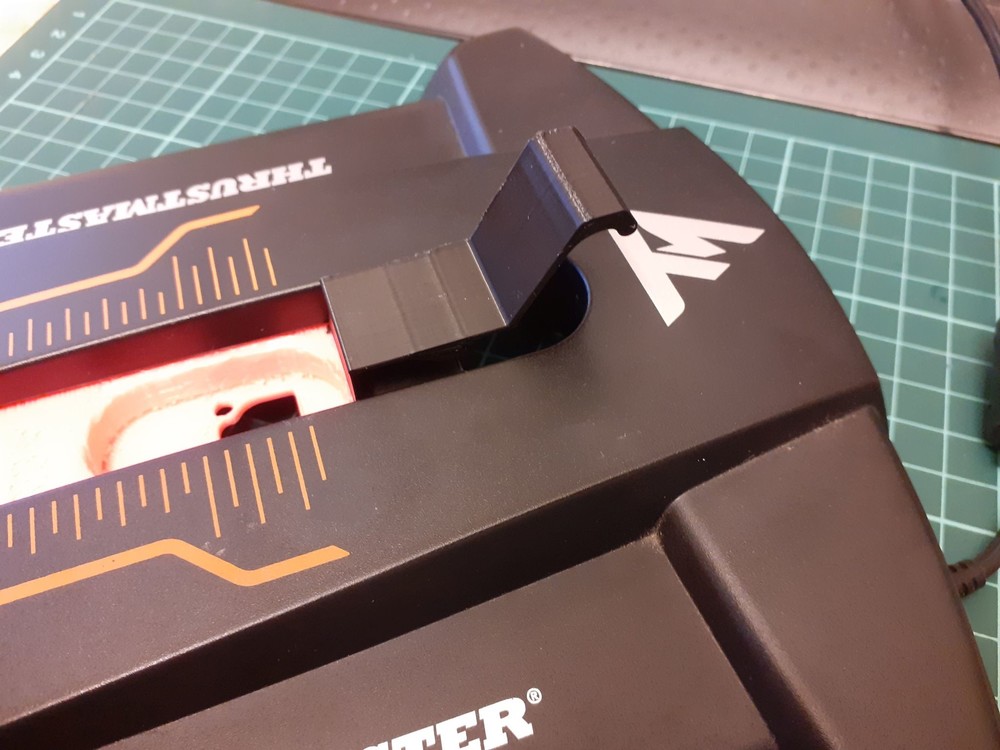
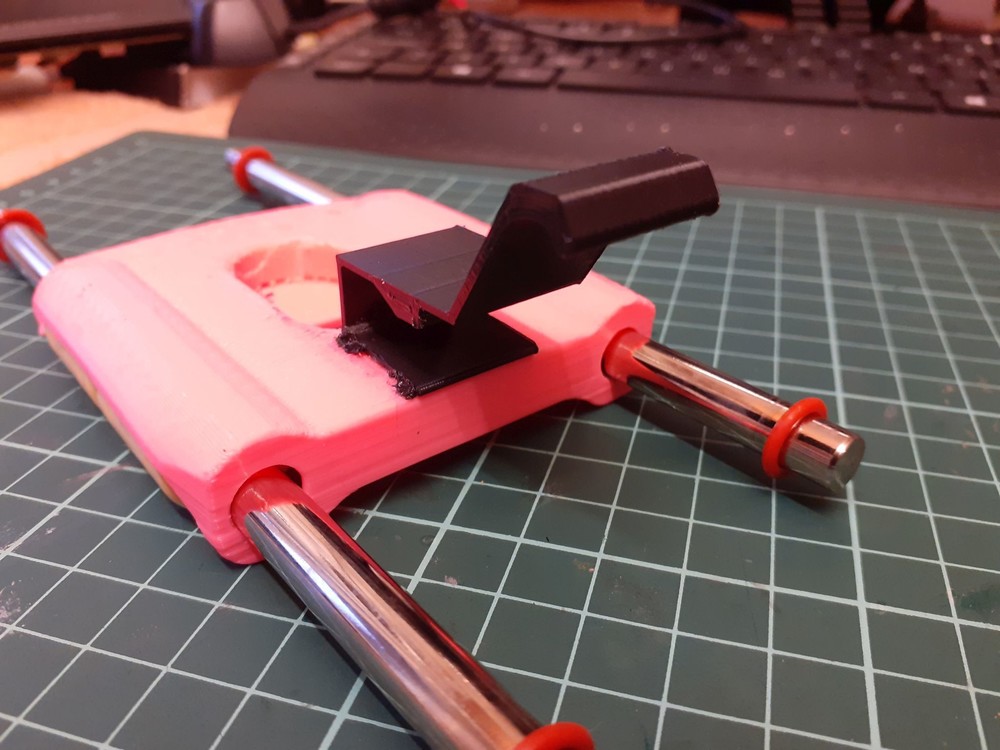
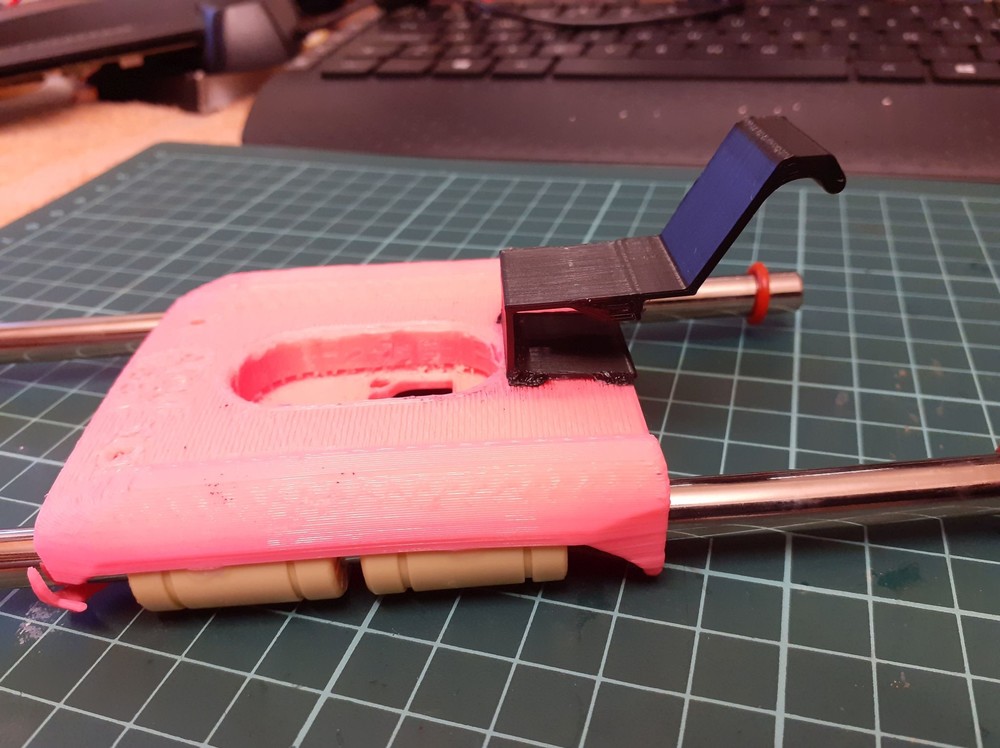
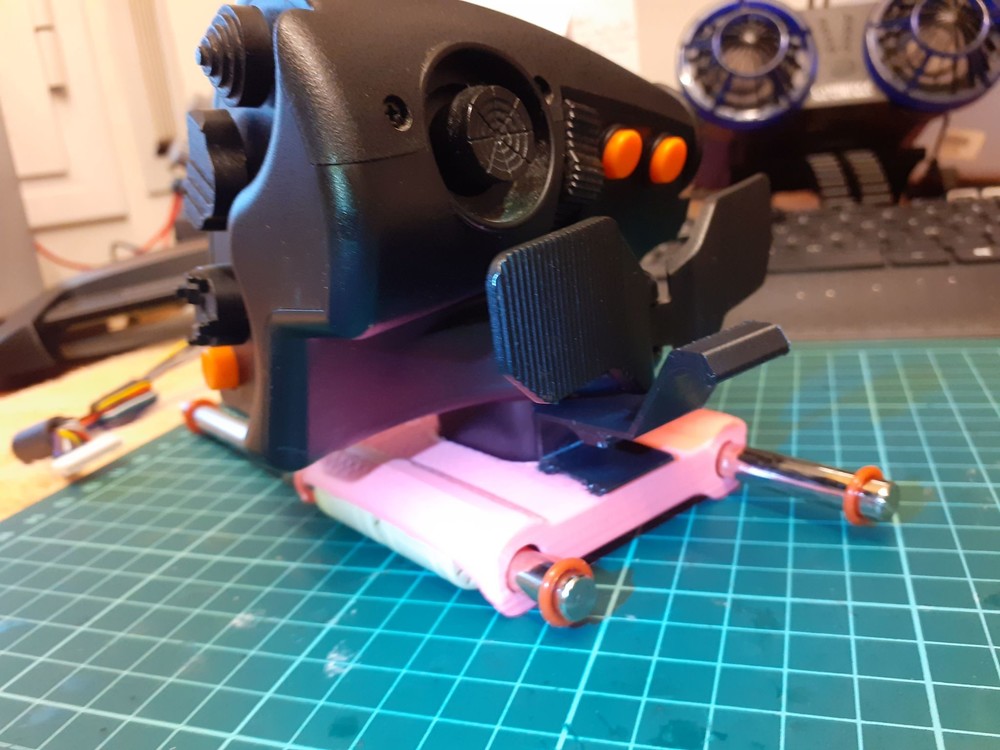
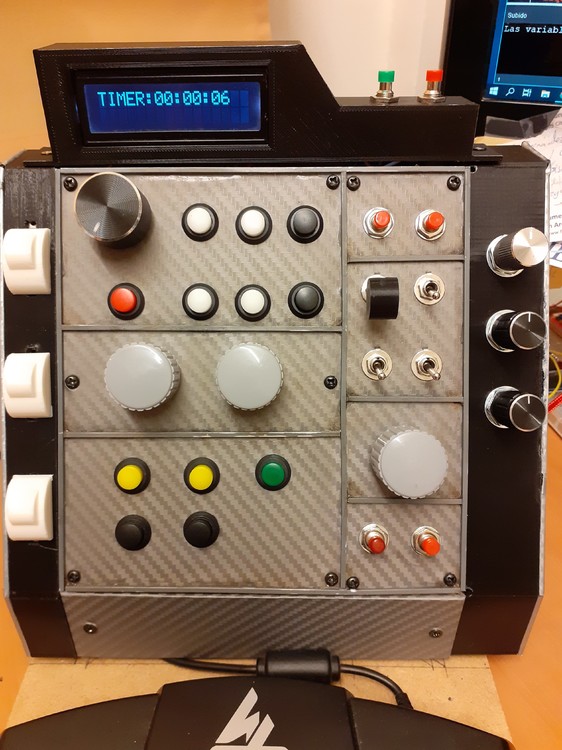
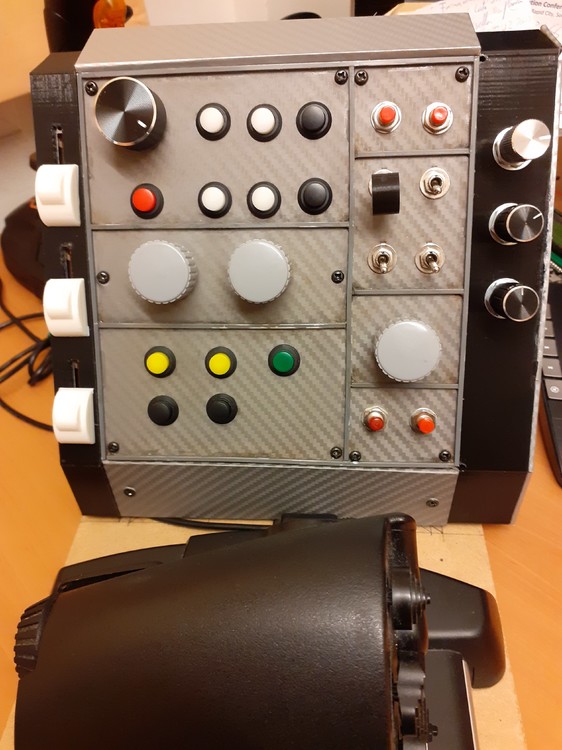

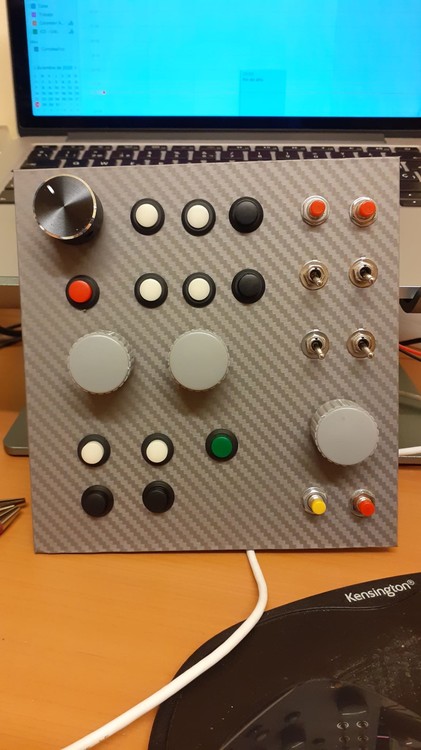


My DCS-Bios multi-module solution and furthermore wireless 😉
in Home Cockpits
Posted
As far as I know it could be possible. RS485 uses the serial bus interface and the ESPs microcontrollers integrate it.